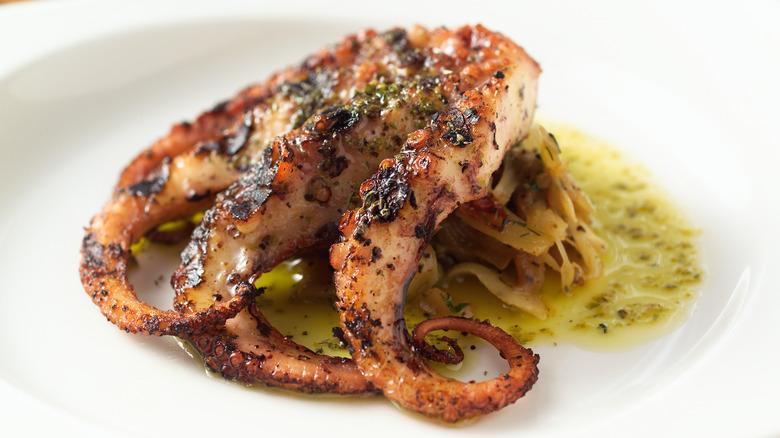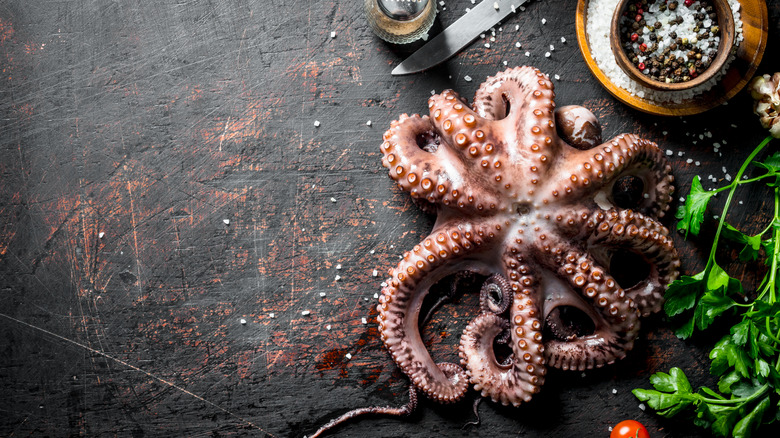Don't Skip This Important Step When Making Grilled Octopus
Grilled octopus is a dinnertime stunner whether you're cooking for two or hosting an al fresco party. You can keep it simple and lay it over charred veggies, or pair it with spices, citrus, and ancho salsa for a Mexican twist. No matter what recipe you use, octopus promises to be special and delicious, as long as one crucial make-or-break detail works in your favor: the texture. No one wants rubbery octopus, but thankfully you can completely avoid this by par-cooking the seafood before grilling.
Octopus can be rubbery because of its muscle fibers and collagen. Fellow cephalopods like squid also have lots of collagen but are more tender to begin with. Octopus needs enough heat for a sufficient amount of time for the collagen to break down, resulting in a tender consistency. A few minutes on the grill is unlikely to cut it, so par-cooking before you grill is really essential for making octopus with a desirable texture.
There are a few different ways to effectively par-cook octopus. Whatever method you choose, keep in mind that you can't rush it or else you'll end up with a rubbery consistency. You can simmer or boil it for about an hour, or speed it up with a pressure cooker, which only takes around 15 minutes. Or, you can use the sous vide technique — five hours at 175 F produces good results.
How to prepare and tenderize octopus
To prepare octopus before grilling it, make sure it's totally clean. It should be when you buy it, but it's smart to double-check for any gooey bits or even sand. Depending on where you shop, it may still have eyes and a hard beak where the legs meet, but these are easier to cut out after it's been softened by cooking. Some people employ additional tenderizing methods before cooking, like massaging the octopus, freezing it for a few hours and then thawing it, or pounding it with a meat mallet. None of these seem all that necessary, though, with sufficient par-cooking.
The pressure cooker method is straightforward: The higher pressure boosts the water's boiling point while trapping steam, causing the octopus to cook extra quickly. For the hour-long boil approach, some people toss a wine cork into the water. The idea is that it releases enzymes that further help break down proteins in the octopus that could keep it from tenderizing, but it is most likely a myth, since corks go through processing.
To use the sous vide process at home, place the octopus in a vacuum-sealed bag and cook it in a water bath at 175 F. If you don't have a vacuum sealer, use a sealable plastic bag and dip it partway into the water before closing it once the pressure pushes out the air. After five hours, you'll have tender octopus ready for a tasty outer char on the grill.

